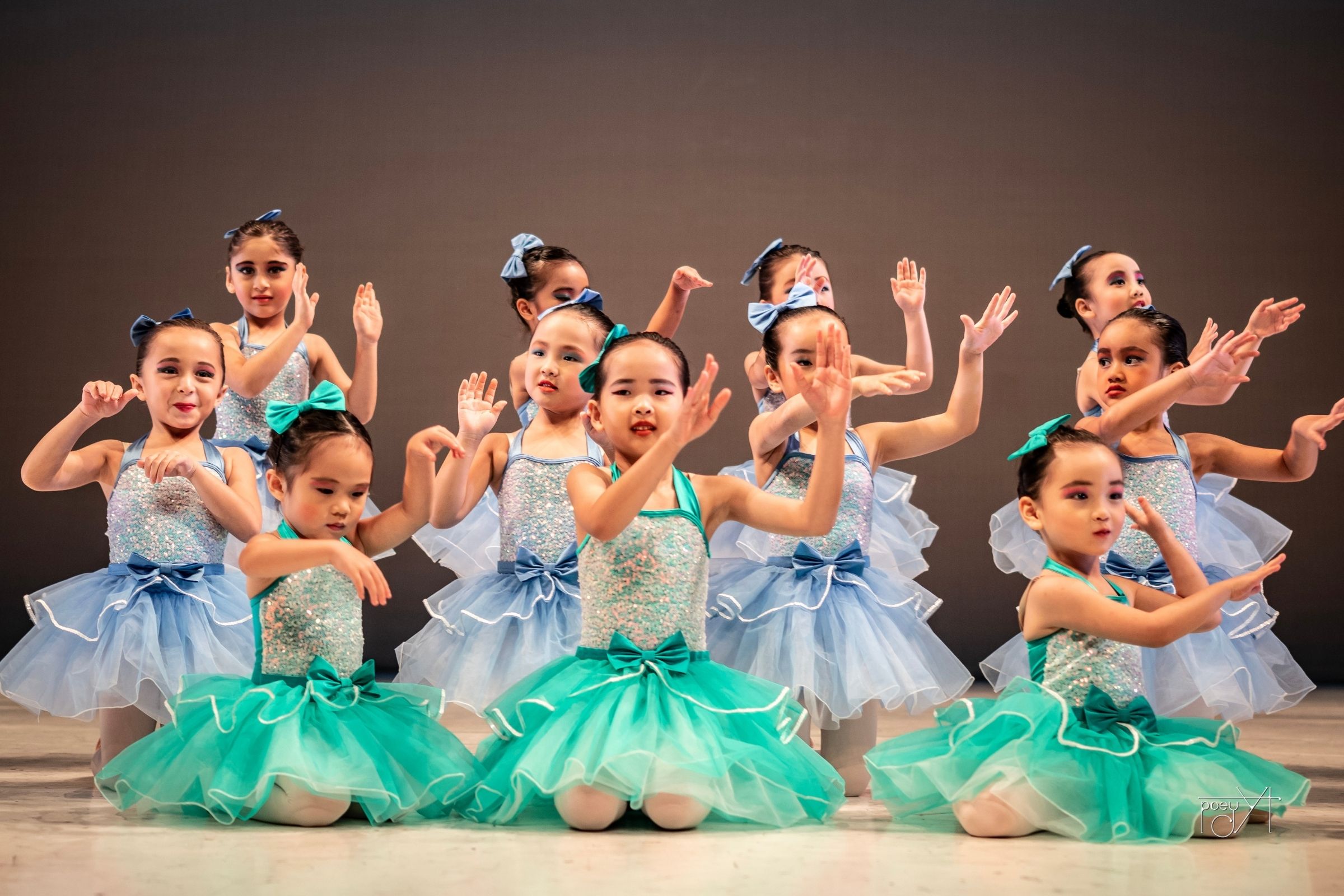How Ballet Helps Kids Get Ready for a Future in Performing Arts

Ballet does more than teach children how to dance. It gives them a strong base for learning, growing and expressing themselves. When a child steps into a ballet class for children, they begin a journey that helps their body, mind and heart. Ballet builds strength, balance and posture. It also teaches focus, respect and discipline.
Many children who begin with ballet often go on to enjoy other styles, including modern dance for kids. Whether they dream of the stage or simply enjoy moving to music, ballet gives them the tools to succeed. In this blog, we’ll explore how ballet shapes young performers and why it’s such a powerful start to a life full of creativity and confidence.
Ballet Begins the Journey
A Strong Start
Many children take their first dance steps in ballet class. Ballet gives them a strong base. It teaches how to move, how to listen, and how to work with others.
Body and Balance
In ballet, kids stretch, balance, and hold their bodies in different ways. They lift their arms like wings, point their toes like arrows, and glide across the floor. These moves make their muscles stronger and help them stay balanced. When they practise these steps, they get better at other dances too.
Ballet Shapes the Mind
Focus and Effort
Ballet doesn’t only grow the body. It sharpens the mind too. In a ballet class for children, kids listen closely, watch carefully and repeat steps until they remember them well.
Learning and Growing
Ballet isn’t easy. Some moves take many tries. But each time kids practise, they get better. They learn how to keep going, even when it feels tricky. Teachers give tips to help dancers improve. “Lift your chin,” “Keep your knees straight,” “Land softly” as these words help kids dance better.
Ballet Builds Brave Performers
Facing a Crowd
Ballet lets kids perform in front of others. Many dance schools have shows where children wear costumes and step on stage. For some, it’s their first time in front of a crowd.
Showing Feeling
In ballet, kids don’t use words. They show joy, sadness, or excitement with their arms, legs, and faces. They learn to act through dance. These feelings help them if they want to become actors or singers. Every show makes them braver. It helps in class plays, concerts, or speaking in front of people. That’s why early ballet training for young performers is such a strong start.
Ballet Grows Team Spirit
Dancing Together
Ballet is not just about dancing alone. In many dances, kids move together. They learn to turn at the same time, move in lines, and follow patterns. This teaches them how to be a good teammate.
Kindness and Respect
In ballet class, kids follow the teacher and show care for others. They help each other tie shoes, fix their costumes and share space. They learn that everyone matters. They also cheer each other on, which helps build friendships and trust.
Ballet Opens the Door to Other Dances
Moving Between Styles
Ballet helps children to try new styles. Kids with ballet training often enjoy modern dance for kids, jazz or theatre dance. Ballet teaches how to count music, move with care and use the whole body. These things help with every kind of dance.
A Creative Mix
Modern dance lets kids move in fun and free ways. Ballet helps them stay strong while they explore. They can leap, roll, spin, and create their own moves. With both ballet and modern dance, they grow into smart, creative dancers.
Ballet Builds Life Skills
Confidence in Every Step
When kids learn a new dance, they feel proud. They stand taller, smile more, and believe in themselves. This helps in school, plays, singing and talking in front of others.
Memory and Focus
Ballet helps children to remember steps and work hard. They learn to listen to music, follow rhythms and copy moves. These skills help them with schoolwork, acting and learning songs. They also learn to practise, try again and never give up.
Ballet Leads to the Stage
A Path to Performance
Children who love performing often begin with ballet. Many actors, singers and dancers started this way. Ballet helps them move with purpose and look strong on stage. Ballet teaches stage presence, timing, and confidence.
More Than Dance
In shows and musicals, performers sing, act, and dance. Ballet helps kids move clearly and look graceful. Some auditions even ask for ballet skills. Some kids grow up to plan dances. Ballet teaches how moves fit together. They learn where to place dancers, how to use space, and how to tell a story with dance. All this comes from strong ballet training for young performers.
Ballet Creates Daily Habits That Last
A Routine That Builds Confidence
When kids attend ballet classes, they follow a rhythm warm-up, steps, stretches, and cool-down. This routine teaches them how to manage their time and focus on one thing at a time. These habits carry into other parts of their lives like school, reading, and even bedtime.
A Habit of Trying Again
Ballet encourages kids to try a step, practise it, and do it again. If they fall or miss a step, they get back up. They learn not to quit when something feels hard. This daily practise builds patience and trust in themselves. Later, when they face a tough maths problem or learn a new song, they use the same strength they found in ballet.
Ballet Brings Families Together
Support from Home
Parents and carers play a big part in a child’s ballet journey. They help with lessons, costumes, and shows. They watch practice, clap at performances, and give hugs after class. This support helps children feel proud and loved.
Family Time and Memories
Ballet shows, rehearsals, and dressing up bring families together. They take photos, share laughs, and build memories. When children see their loved ones cheering them on, they feel special. These shared moments build strong family bonds and bring joy to both children and parents.
Ballet Sparks Dreams and Imagination
Seeing the Possibilities
When children dance, they don’t just follow steps as they dream. They imagine being swans, fairies, or stars on big stages. Ballet fills their minds with magic and wonder. They dream about costumes, lights and applause. These dreams inspire them to keep dancing and exploring.
From Imagination to Action
Ballet teaches kids how to turn dreams into real moments. They learn to rehearse, focus and perform. This shows them that hard work can turn wishes into real things. Whether they dream of dancing, acting or creating stories, ballet helps them believe in what’s possible.
Ballet Helps with Social Skills
Making New Friends
In ballet class, children meet others who enjoy the same thing like dancing. They stretch side by side, learn steps together and cheer each other on. Over time, these moments help them make real friends. They learn to share space, take turns and be kind to one another. Friendships in class often grow into playdates, birthday invites and strong bonds that last outside the studio.
Learning How to Work with Others
Dancing in a group teaches children how to work as a team. They learn how to wait for their turn in a routine, listen to the teacher and help a classmate if they forget a step. These small moments teach big lessons about trust, support and working together. These skills help later in school projects, sports teams, and theatre shows.
Conclusion
Ballet shapes more than dancers. It helps children become confident, focused, and creative individuals. Through movement, music, and teamwork, they learn how to work hard, express emotions, and shine on stage. A ballet class for children teaches them how to stay calm under pressure, follow instructions, and believe in themselves. When they explore other styles like modern dance for kids, their ballet training supports every step.
Even if they don’t become professional performers, the lessons from ballet stay with them for life. From stage presence to daily routines, ballet gives children the tools they need to grow. It opens doors to the performing arts and builds habits that last.
Note: IndiBlogHub features both user-submitted and editorial content. We do not verify third-party contributions. Read our Disclaimer and Privacy Policyfor details.







